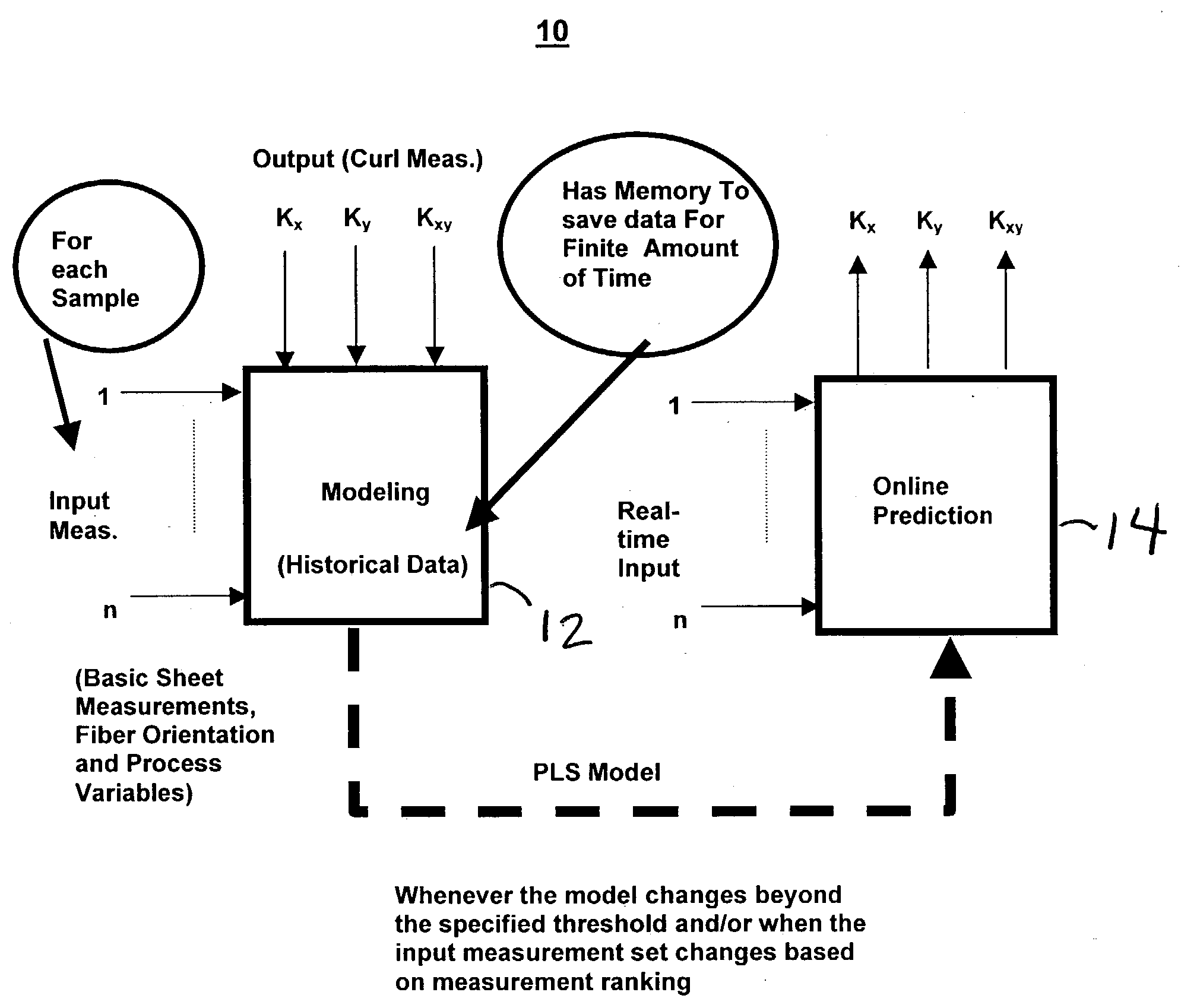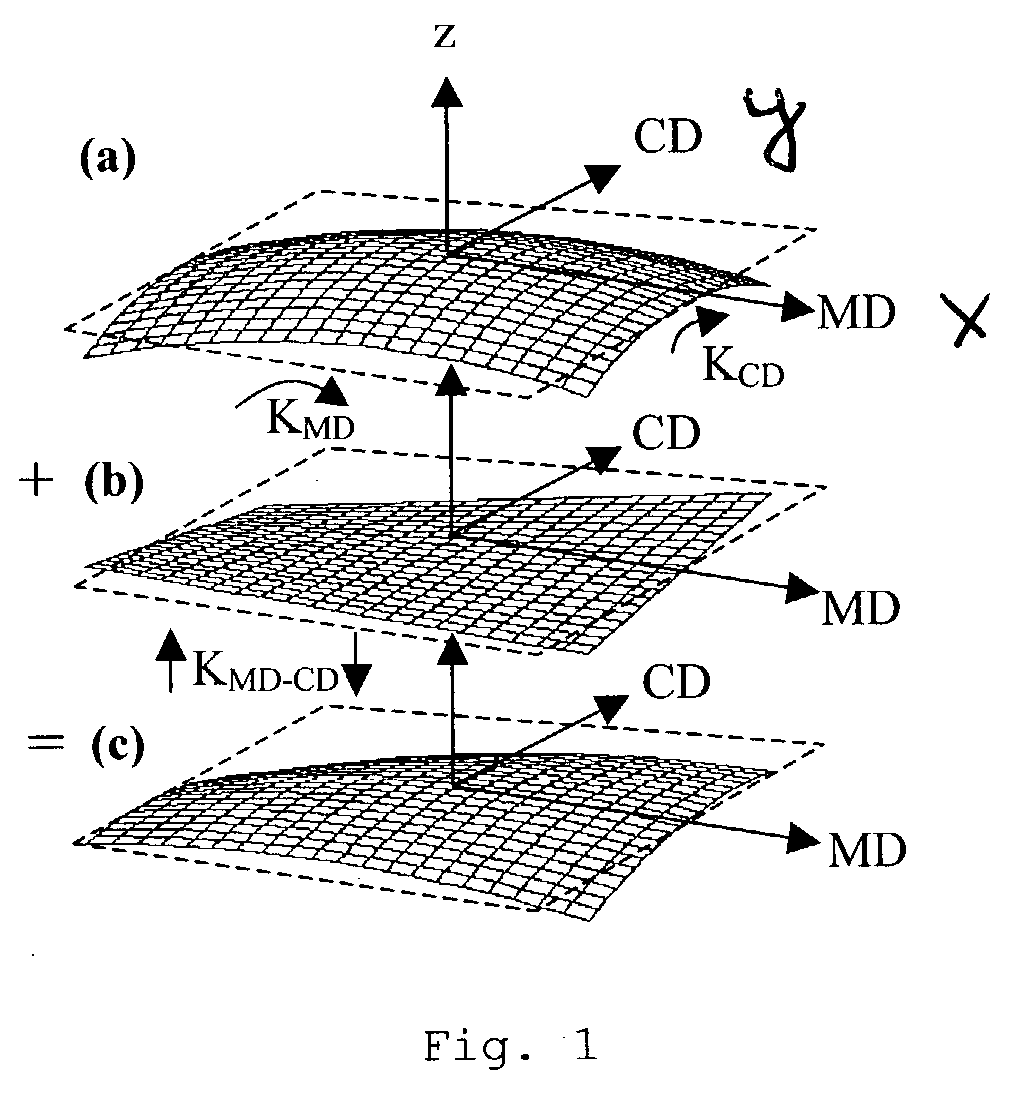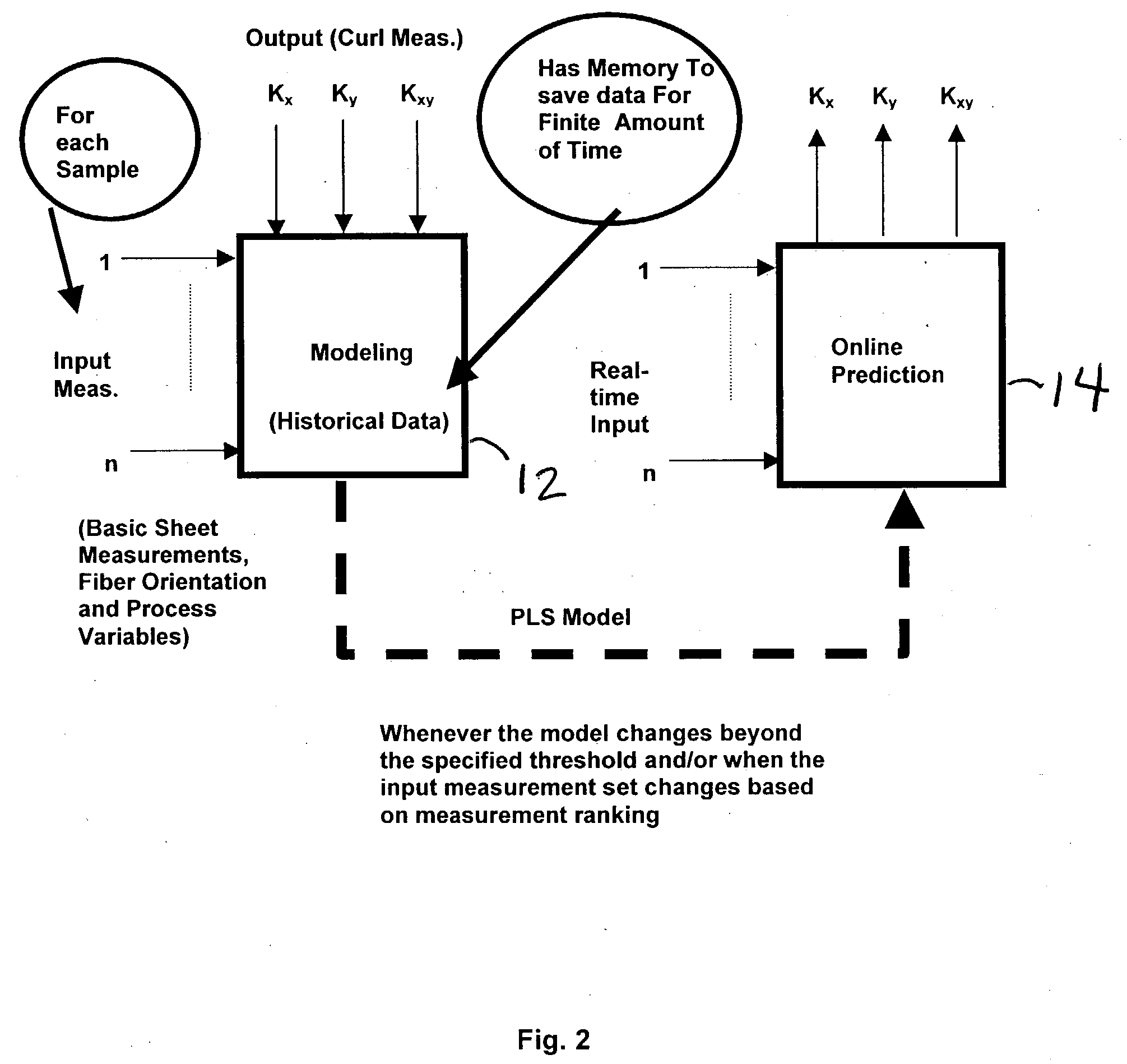Partial least squares based paper curl and twist modeling, prediction and control
a technology of partial least squares and curling, applied in adaptive control, process and machine control, instruments, etc., can solve the problems of paper to twist, modeling and controlling curl and twist a complex control problem, and little work in modeling, predicting and controlling curl and twist in paper machines
- Summary
- Abstract
- Description
- Claims
- Application Information
AI Technical Summary
Benefits of technology
Problems solved by technology
Method used
Image
Examples
Embodiment Construction
(s)
[0031] In accordance with the present invention, there is described herein with respect to a paper machine producing multi-ply paperboard, a framework for implementing the PLS technique for modeling, predicting and controlling curl and twist in the paper machine. While the framework is described herein with respect to a paper machine producing multi-ply paperboard, it should be appreciated that it is applicable to any paper machine.
[0032] The framework includes selection of key measurements during the modeling stage in order to eliminate unnecessary input measurements. Any unnecessary input measurements can only be detrimental in the output prediction when included in spite of the theoretical capabilities of the PLS modeling technique. Removing unnecessary measurements can make a significant beneficial impact on accuracy and performance of the overall framework.
[0033] Referring now to FIG. 2, there is shown a block diagram representation of the framework 10 of the present inventi...
PUM
 Login to View More
Login to View More Abstract
Description
Claims
Application Information
 Login to View More
Login to View More - R&D
- Intellectual Property
- Life Sciences
- Materials
- Tech Scout
- Unparalleled Data Quality
- Higher Quality Content
- 60% Fewer Hallucinations
Browse by: Latest US Patents, China's latest patents, Technical Efficacy Thesaurus, Application Domain, Technology Topic, Popular Technical Reports.
© 2025 PatSnap. All rights reserved.Legal|Privacy policy|Modern Slavery Act Transparency Statement|Sitemap|About US| Contact US: help@patsnap.com



